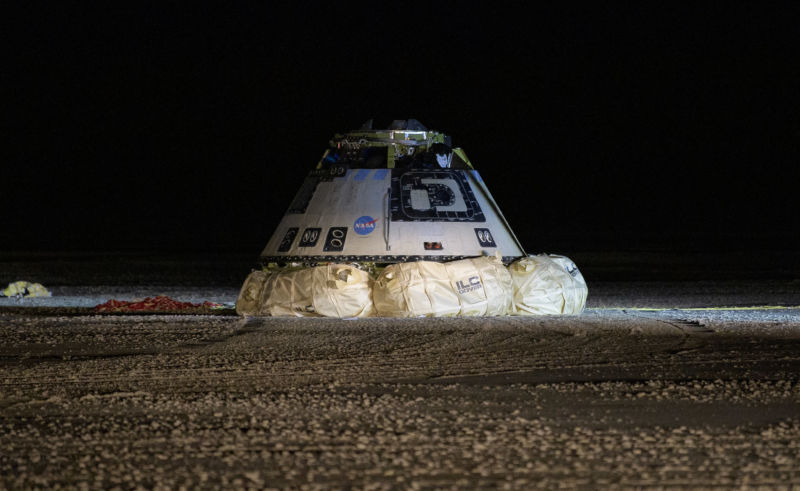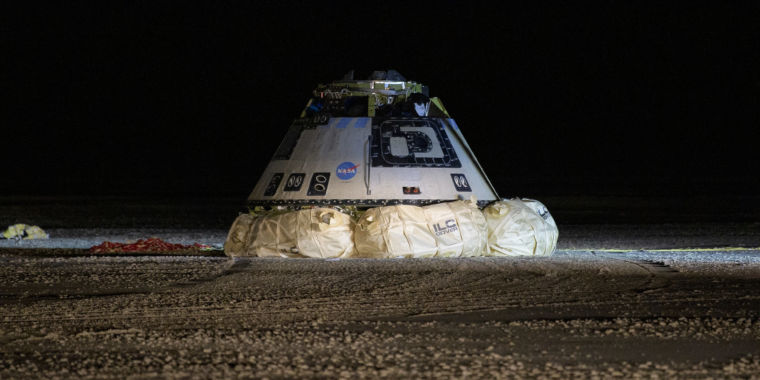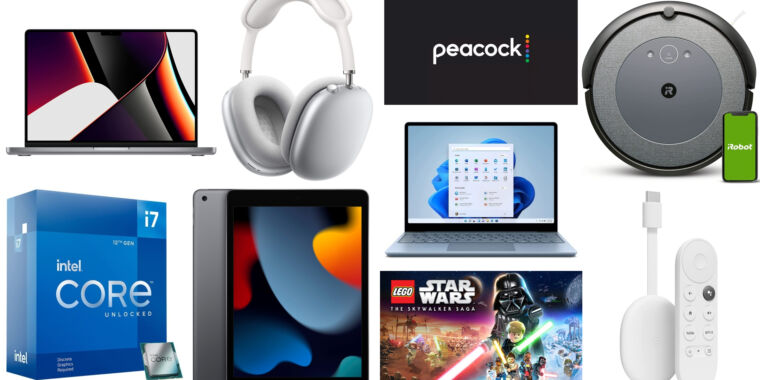
NASA/Bill Ingalls
NASA confirmed Wednesday that it has awarded five additional crew transportation missions to SpaceX, and its Crew Dragon vehicle, to ferry astronauts to the International Space Station. This brings to 14 the total number of crewed missions that SpaceX is contracted to fly for NASA through 2030.
As previously reported by Ars, these are likely the final flights NASA needs to keep the space station fully occupied into the year 2030. While there are no international agreements yet signed, NASA has signaled that it would like to continue flying the orbiting laboratory until 2030, by which time one or more US commercial space stations should be operational in low Earth orbit.
Under the new agreement, SpaceX would fly 14 crewed missions to the station on Crew Dragon, and Boeing would fly six during the lifetime of the station. That would be enough to fill all of NASA’s needs, which include two launches a year, carrying four astronauts each. But NASA has an option to buy more seats from either provider.
“NASA may have a need for additional crew flights to the International Space Station beyond the missions the agency has purchased to date,” agency spokesman Josh Finch told Ars. “The current sole source modification for SpaceX does not preclude NASA from seeking future contract modifications for additional transportation services, as needed.”
Price and performance
In its announcement of the seat purchase NASA did not elaborate on its reasons for purchasing 14 missions from SpaceX and just six from Boeing. However, this decision to buy all of the remaining seats from SpaceX is likely due to past performance and price. SpaceX started flying operational missions to the space station in 2020, with the Crew-1 mission. Although Boeing’s Starliner has a crewed test flight early next year, likely in February, its first operational mission will not come before the second half of 2023.
Additionally, there is some question about the availability of rockets for Starliner. Boeing has purchased enough Atlas V rockets from United Launch Alliance for six operational Starliner missions, but after that the Atlas V will be retired. During a news conference last week, Boeing’s program manager for commercial crew, Mark Nappi, said the company is looking at “different options” for Starliner launch vehicles. These options include buying a Falcon 9 from a competitor, SpaceX, paying United Launch Alliance to human-rate its new Vulcan rocket, or paying Blue Origin for its forthcoming New Glenn booster.
Whatever NASA’s ultimate reasons, it is clear in hindsight that the space agency has gotten a much better deal from SpaceX in the commercial crew competition.
There are several ways to assess the true costs of the program to NASA, but probably the simplest way is adding up the money NASA awarded each company for development of their crewed spacecraft and for flying operational missions and dividing that by the number of seats purchased over the lifetime of the program. Recall that each of the two spacecraft, Boeing’s Starliner vehicle and SpaceX’s Crew Dragon, is rated to carry four astronauts for NASA.
In 2014, NASA narrowed the crew competition to just two companies, Boeing and SpaceX. At that time, the space agency awarded Boeing $4.2 billion in funding for development of the Starliner spacecraft and six operational crew flights. Later, in an award that NASA’s own inspector general described as “unnecessary,” NASA paid Boeing an additional $287.2 million. This brings Boeing’s total to $4.49 billion, although Finch told Ars that Boeing’s contract value as of August 1, 2022, is $4.39 billion.
For the same services, development of Crew Dragon and six operational missions, NASA paid SpaceX $2.6 billion. After its initial award, NASA has agreed to buy an additional eight flights from SpaceX—Crew-7, -8, -9, -10, -11, -12, -13, and -14—through the year 2030. This brings the total contract awarded to SpaceX to $4.93 billion.
Costs to NASA
Since we now know how many flights each company will be providing NASA through the lifetime of the International Space Station, and the full cost of those contracts, we can break down the price NASA is paying each company per seat by amortizing the development costs.
Boeing, in flying 24 astronauts, has a per-seat price of $183 million. SpaceX, in flying 56 astronauts during the same time frame, has a seat price of $88 million. Thus, NASA is paying Boeing 2.1 times the price per seat that it is paying SpaceX, inclusive of development costs incurred by NASA.
From these numbers it may seem like Boeing is profiteering from a government program, but that is likely not the case. Commercial crew is a fixed-price program, which means the companies are responsible for overruns. Boeing has already reported about half a billion dollars in charges due to the need to refly an uncrewed Starliner demonstration mission. Two sources told Ars the program has been a money-loser for Boeing, as it has struggled to manage the transition from cost-plus to fixed-price contracts.
Still, Boeing’s participation has been essential for NASA, both in fostering competition and in securing congressional funding. The NASA administrator at the time the development contracts were awarded in 2014, Charles Bolden, confirmed this during an interview in 2020. He said Congress would not have funded the commercial crew program had Boeing not bid alongside SpaceX.
“Boeing was a dream,” Bolden told Aviation Week. “I call them a champion in being willing to accept the risk for a program whose business case didn’t close back then. And I’ll be blunt. I don’t know whether the business case closes today.”








